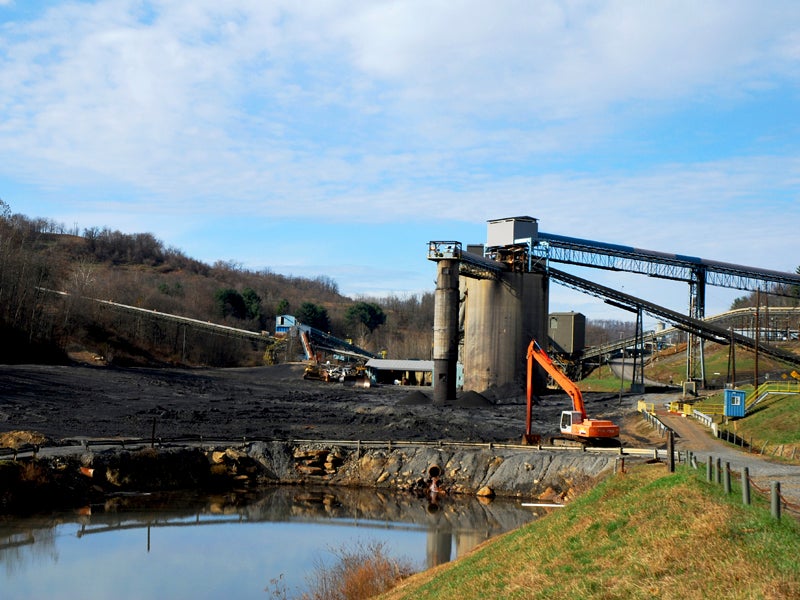Coal Ash’s Unhealthy Glow
A new study reveals dangerous radioactivity in coal ash, the toxic waste generated by burning coal for electricity.

This page was published 10 years ago. Find the latest on Earthjustice’s work.
Burning coal for energy leaves behind toxic coal ash waste, and that waste may be even more harmful than researchers suspected. In a paper published today in Environmental Science and Technology, scientists and engineers from Duke University and the University of Kentucky found coal ash has up to 10 times more radioactive material than the parent coal it comes from because burning coal concentrates its natural radioactivity. Coal ash also has up to five times more radioactivity than average soil in the U.S.
Particularly alarming are the study findings that radioactivity may exceed safe levels for human exposure if coal ash is not isolated from water and kept from blowing away in the wind. The consequences of long-term exposure to radioactivity are dire—including life-threatening diseases such as lymphoma, bone cancer, leukemia and aplastic anemia. Cancer-causing radium in ash can remain in the lungs for months after inhalation, gradually entering the bloodstream and depositing in bones and teeth for the lifetime of the individual.
The findings raise significant new concerns for the health and safety of communities living near coal ash disposal and reuse sites. The scientists found varying degrees of radioactivity in different ashes, depending on the source coals, with the highest levels found in coal from the Illinois Basin. The research confirms the need for the EPA’s new coal ash rule, effective this October, which requires the monitoring of groundwater near coal ash disposal sites for radioactivity. Above all, the study raises a glowing red flag for any member of Congress still seeking to obliterate the EPA’s protective rule when Congress returns next week.
To date, the EPA has never actively looked for radioactivity at coal ash disposal sites. Despite scarce data, Earthjustice and the Environmental Integrity Project brought several sites where water was contaminated with high levels of radioactivity to the attention of the EPA. These included four coal ash dumps in Florida and two dumps in Ohio, where the level of radioactivity in nearby groundwater greatly exceeded federal health standards.
In addition, elevated radioactivity was found in coal ash used in dozens of beneficial use projects in Puerto Rico. There are surely scores of additional contaminated sites, but since most dumps are not required to test for radioactive elements, the levels of radioactivity in the ash and water are still unknown.
While the EPA’s new coal ash rule will require monitoring of groundwater for radium 226 and 228, a loophole in the new rule will still allow coal ash fill sites to go unmonitored—no matter the size of the fill. It’s abundantly clear that the use of thousands of tons of coal ash without testing or monitoring can endanger the communities that live around—or on top of—these fill sites. Developers must proceed with the utmost caution to make sure their projects don’t create a legacy of cancer and other deadly diseases.
While this new scientific study fills in a critical gap, it also points to the need for additional research into the health hazards of radioactive coal ash. This report should lead the EPA to conduct targeted testing of coal ash dumps and reuse sites to ensure that communities are not in danger. We now know that coal ash, even buried decades ago, may still present very serious hazards to human health and the environment. This study must not be ignored.
Earthjustice’s Clean Energy Program uses the power of the law and the strength of partnership to accelerate the transition to 100% clean energy.